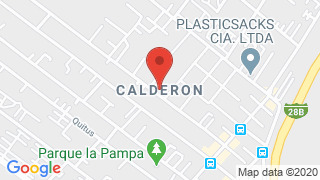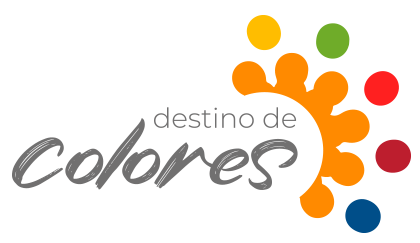Calderón
Calderón is a land of wooden and marzipan handicrafts, one of the 12 colorful destinations in the province of Pichincha. Come and meet skilled artisans who will amaze you with their ancestral techniques.


Destino de Colores - Colorful destinations of Pichincha
- Calderón's colors reflect the brown tones of the wood used in its crafts and all the colors of the rainbow that delight the gaze of tourists who contemplate the creativity of the marzipan figures.
- Calderón, Aloasí, Calacalí, La Merced, Lloa, Mindo, Machachi, Pacto, Pintag, Pomasqui , Pedro Vicente Maldonado, El Quinche, are part of the Destino de Colores campaign, they are a select group of rural destinations of Pichincha province that offer to tourists a variety of tourism experiences oriented to contact with nature and culture; as well as sustainable and community tourism experiences.
- Prefectura de Pichincha, through the Destino de Colores campaign, promotes the entrepreneurial spirit of Pichincha people.
What should you know about Calderón?
- Calderón is a rural town part of Quito, capital of Pichincha province .
- In the Guangüiltagua plateau are located Calderón and Llano Chico; many people have chosen this place to live thanks to its weather conditions. The dry climate is propitious for the convalescence of diseases that are acquired in humid places.
- There are main cultural heritages that remain in Calderón: the celebration of the Day of the Dead on November 2nd, the elaboration of marzipan handicrafts and the carving of wooden furniture that have transcended despite the years and the growth of the population.
- In 1930 with the construction of the Panamericana Norte Highway divided the town of Calderón in two. Today this highway is the main access route to Calderón.
- Calderón is also connected to the center of Quito by the Simón Bolívar Highway.
- To access Calderon from Quito you take 10 de Agosto avenue to the North, later this avenue takes the name of Galo Plaza avenue, go until the Carcelén interchange road , there you take Panamericana Norte go until the entrance bridge to Calderón.
A close up of Calderón
- The original name of the area was Carapungo (Quichua), which means “ entrance of the faces ”, referring to the indigenous group.
- In 1987, the name was replaced by Calderón, in honor of the hero of the battle of Pichincha, Abdón Calderón.
- Calderón has an area of 7,890 hectares and reaches a maximum height of 2,659 meters.
- There are versions about that in the formative period, this plateau was populated by men belonging to the Cotocollao Culture (1100 BC - 540 BC).
- With a great cultural diversity, Calderón promotes the route of the churches located in the communes and urban area. On this route we find ancestral rituals that revive the identity of our peoples.
Wooden crafts in Calderón
- Hugo Ortega, the artist who created the Calderón coat of arms, is one of the most important woodcarvers in this town.
- Franklin García, an artist specialized in the inlay technique that consists of inlaying different pieces of wood, strategically designed to produce spectacular surfaces for decorating all types of furniture.
- Hugo and Franklin are two good exponents of the traditional woodworking technique.
- One of its highest representatives is Mr. Segundo Vega, who created the doors of the Mejía School, the altar of the church of Conocoto , the platforms of the church of La Merced , the Inca-style doors of the theater of the Central University and even the altar of the church of El Quinche .
- The business was very fruitful at that time and had several employees who were learning not only the art, but also the love of woodworking, becoming a true school.
Association of embroiderers of Llano Chico
- Verónica Motesdeoca, representative of the Association, tells how several indigenous peoples settled in Carapungo, distributed in the communes of San Miguel, Oyacoto, La Capilla, Santa Anita and Llano Chico. That fusion of cultures was the breeding ground for textile craft techniques.
- The tupullinas, some sheets made with the fabrics of the flour covers, are perhaps the beginning of this tradition. The embroiderers of Llano Chico say that their great-grandmothers embroidered tupulinas with sheep's wool, and after several decades, they transferred that learning to their clothing.
- That is why Calderón's textile products, which have beautiful embroideries, still preserve the "torchada", the "crusades" and the "cord", which are the characteristic stitches of this area of Ecuador.
- For the embroiderers, their products are literally a language, capable of communicating the desires of their ancient peoples, holders of a living history, in constant transformation.
Salomé Collahuazo, entrepreneur of urban gardens
- Salomé promotes her garden that produces organic legumes and vegetables: tomatoes, lettuce, cabbage, broccoli, cauliflower, onions and green beans.
- It is not only about producing, it is more about understanding and knowing what we eat, that is an urban garden for Salomé.
Union of Progressive Craftsmen Masapán Calderón
- Maria Vicenta Lincango explains the magic that transforms something edible into a work of art to decorate our homes.
- In Calderón, artisans have been engaged in this trade for several decades.
- La Unión Artesanal shows the world the skill of Ecuadorian hands that with common ingredients make true pieces of art that are distributed throughout the world.
- This is how several artisans joined to be part of this initiative. Year after year they renew their products to stay current and be competitive in the market.
- The details of each figure are unique and unrepeatable, each one has a moment of dedication and its own identities, that is, if you buy a piece made of marzipan, you are buying an authentic and original item to decorate your homes.
- In this space that brings together 26 stores, you will be able to find nearly 2,000 pieces worked with love and a lot of dedication. "For the art of marzipan, there must be a vocation, taste, and ability ," says one of the organization's partners.
- In the place there is a party of colors, figures, details and more; cayambeñas, saraguros, fauna from Ecuador and an infinity of articles you will find in this space, the same ones that are waiting to be acquired, for two reasons: first, to decorate your home, and second, to support artisans who seek to maintain the tradition of making figures in marzipan.
- 99% of these handicrafts are sold in international markets, the most important being Peru, Chile and Europe.
Marzipan an edible material transformed into art
How to make a marzipan figure?
- The experts of this site told us how to make them, however, not all the secrets of the "magicians of the art in marzipan in Calderón" were revealed.
- First of all, you must have the necessary ingredients, among them: castilla flour, water, glue, and if applicable, cornstarch.
- After this, we proceed to mix, cook and knead all the ingredients until reaching an optimal point to mold the figures.
- Step three, is the decoration that will depend on the figure, the decoration is entirely manual, after this step, the figure is left to dry in the open air, the drying will depend on the size of the image, the time can vary from 4 to 10 days.
- Once it is dry, it is packaged and distributed in associated stores and in each association location.
- Innovation is the axis of these artisans, who currently make pieces of art with various materials such as: wood, coconut, walnut, quail egg shell, leather, and other inputs that allow them to enter a more demanding market.
A tradition that commemorates death
- The tradition of marzipan dates back several years, where the indigenous population of Calderón attended the graves of their loved ones every November 2nd, carrying figures made of marzipan such as cars, soldiers and horses; the objective was to share with the deceased. The belief was that the dead at night came out to eat. This tradition becomes a prolongation of life and a denial of death.
- The President of the Association comments that the activity began 80 years ago as a craft business, with figures without tails, known for the absence of feet and arms, and its rustic decoration. The prices of these works of art oscillate between 30 cents, but depending on the size they can reach a price between 20 to 30 dollars.
- Every November 2nd, the Association performs a great tribute to marzipan. Calderón then invites national and foreign tourists to visit, get to know, and rediscover what is behind the marzipan tradition, and of course, to understand a life of dedication, love and vocation that has allowed entire families to progress and give a student career. to his children.
- The Association is located on Calle Carapungo next to the Calderón Coliseum. It is open from 8:00 a.m. to 12:00 p.m. and from 2:00 p.m. to 5:00 p.m., Monday through Friday and weekends.
Margarita Reza and the history of Calderón marzipan
- Patricio Correa is the grandson of Margarita Reza , who in 1945 opened the doors of the first marzipan crafts store, active until the sixties.
- In Calderón they made the dolls and little horses of bread dough to take to the cemetery with the colada morada and the uchucuta .
- With the passage of time, the bright colors that adorned these unique figures were incorporated.
- The small figures are marketed in stores in the center of Calderón ( Carapungo street ) and artisan shops in various regions of the country.
Holidays and traditions
- Calderon festivity
- From July 28th to August 12th: It begins with the proclamation of festivities, artistic, cultural, and sporting events, a cockfight contest, a marzipan fair, typical foods, a parade, bullfights, and popular dances.
- Day of the Dead
- November 2th: This commemoration begins with a field mass and continues with a talk about the cultural signs and symbols of the date.
- The families then share with each other and offer food to the deceased around his grave.
- The most traditional are the guaguas (girls or dolls) made of bread, the colada morada and the uchucuta (soup made with grains such as corn, beans, peas, chochos, chickpeas and beef).
- Feast of the Virgin of the Immaculate
- December 8th: In this celebration, activities related to theater, dance and a festival of typical foods are organized.
If you are in Calderón you must visit
- Calderón Church
Its construction began in 1914 under the direction of Father Pedro Bruning. The towers built in adobon and bricks, with eucalyptus wood, stand out. The temple keeps the images of San José and the Virgin of the Nativity.
- Pachamama organic gardens
Ten women are dedicated to the organic production of fruits, vegetables and legumes such as cabbage, lettuce, carrots, onions, chard, zucchini and peas.
- Maky churay
It is a community organic farming project that offers visitors the chance to learn about and participate in the harvest in the orchard, and learn about raising animals such as field chickens.

Publicado en:
Publicado por:





